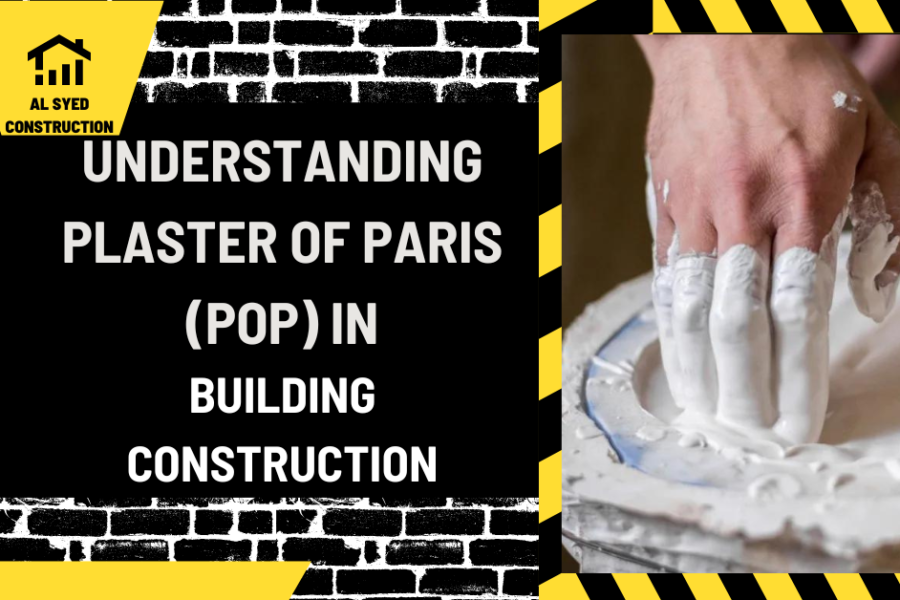Understanding Plaster of Paris (POP) in Building Construction
Table of Contents
Introduction
Plaster of Paris (POP) is a versatile building material that has been used for centuries in construction and interior design. Its name originates from the abundant gypsum deposits in Paris, France, where it was extensively mined. POP is known for its excellent molding properties, smooth finish, and quick-setting characteristics, making it a popular choice in building construction and architectural detailing.
Composition and Properties of Plaster of Paris
What is Plaster of Paris?
Plaster of Paris is a fine white powder primarily composed of gypsum (calcium sulfate dihydrate). When mixed with water, it undergoes a chemical reaction to form gypsum plaster (calcium sulfate hemihydrate), which quickly sets and hardens. This rapid setting property is what gives Plaster of Paris its name, as it sets like the hard plaster used to create casts for broken limbs.
Key Properties of POP
POP is known for its fire resistance, lightweight nature, and ability to create smooth, aesthetically pleasing surfaces. It also provides good insulation against heat and sound, making it a favorable material for interior finishes.
Applications of Plaster of Paris in Building Construction
Interior Decoration and Finishes
POP is extensively used in interior decoration for creating false ceilings, decorative cornices, moldings, and artistic sculptures. Its smooth finish and ease of molding allow for intricate designs and patterns to be crafted, enhancing the aesthetic appeal of interiors.
Repair and Restoration
Due to its quick-setting nature and compatibility with various surfaces, POP is often used for repairing cracks and holes in walls and ceilings. It is also used in the restoration of historic buildings, where preserving the original architecture is crucial.
Casting and Molding
POP is a preferred material for casting and molding due to its fine texture and ability to capture details. It is used to create architectural elements such as columns, capitals, and decorative reliefs.
Advantages and Limitations of Using Plaster of Paris
Advantages
- Quick setting time
- Smooth finish
- Easy to mold and shape
- Fire-resistant
- Lightweight
Limitations
- Not suitable for damp environments
- Less durable compared to other materials like cement
- Can shrink and crack over time
Conclusion
Plaster of Paris is a valuable material in building construction, known for its quick-setting properties, smooth finish, and versatility in interior design and architectural detailing. While it offers several advantages, such as ease of use and aesthetic appeal, it is important to consider its limitations, particularly in terms of durability and moisture resistance. Understanding the properties and applications of POP can help architects, builders, and designers make informed decisions when incorporating this material into their projects.




